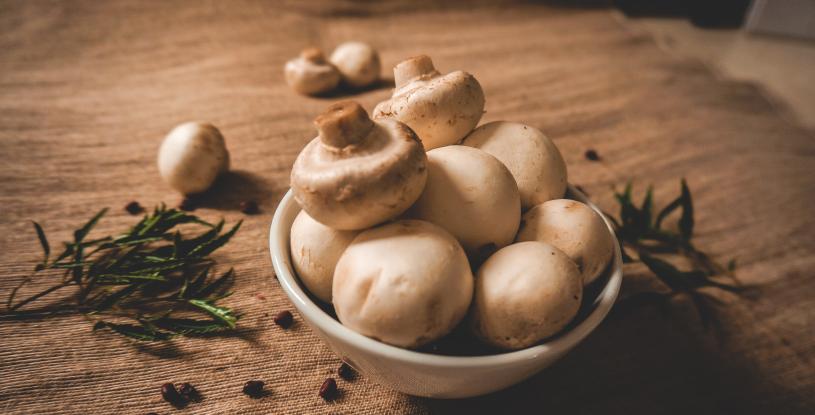Foodie or not, you’re probably hearing a lot about mushrooms. People are looking to mushrooms to support a healthy diet, calm down, even improve their skin, as claims about the benefits of mushrooms explode across consumer and social media.
“Here’s Why Mushrooms are the next Health and Wellness Trend,” proclaims the Today.com website, featuring an article by a Registered Dietitian who shares about the role of mushrooms in healthy eating.
It’s not hype: There’s a scientific basis for edible mushroom consumption. Mintel reports (June 2021) that mushrooms contain Ergothioneine (ERGO), an amino acid with antioxidant and anti-inflammatory properties. Researchers in the U.K. see ERGO as potentially fighting premature aging. As the leading dietary source of ERGO, mushrooms might be considered an important functional ingredient in a healthy diet.
Further, mushrooms are fat-free, cholesterol-free, and low in calories, according to the Mushroom Council. The council’s collection of “Mushrooms in the News” articles for June 2021 includes a story with the headline “Study links mushroom consumption to lower cancer risk.”
If the expected health benefits of mushrooms aren’t enough to make consumers take notice, there’s another critical component to their popularity: Sustainability.
Real Simple magazine notes that mushroom growing “has a very low environmental footprint.” The Mushroom Council says the fungi are “gentle on the planet,” citing a study1 that mushroom production requires minimal resources:
The study finds production of a pound of mushrooms requires only 1.8 gallons of water and 1.0 kilowatt hours of energy, and generates only .7 pounds of CO2 equivalent emissions. In addition, the annual average yield of mushrooms is 7.1 pounds per square foot – meaning up to 1 million pounds of mushrooms can be produced on just one acre.
Clearly, demand for alternatives to animal protein is rising as consumers seek foods that are healthy for both their bodies and the planet. ProTerra® textured wheat and pea proteins can help food formulators meet this demand with meat alternatives and blends. A library of 20 meatless formulations and more than a dozen meat extensions is available to help get new products to market quickly. Learn more here.
1 The Mushroom Sustainability Story: Water, Energy and Environmental Metrics 2017

